Traveling, eating and exploring in Japan can be a challenge if you don’t understand Japanese. But negotiating menus and finding food in Japan as a vegan or vegetarian can be even more difficult than for omnivores. Fear not! These 12 travel tips will pave the way to a delicious journey in Japan for non-meat eaters of all sorts! Travelers who are vegetarian will have an easier time than stricter vegans, but in recent years, at least in big cities, vegan restaurants and dishes are also becoming more common.
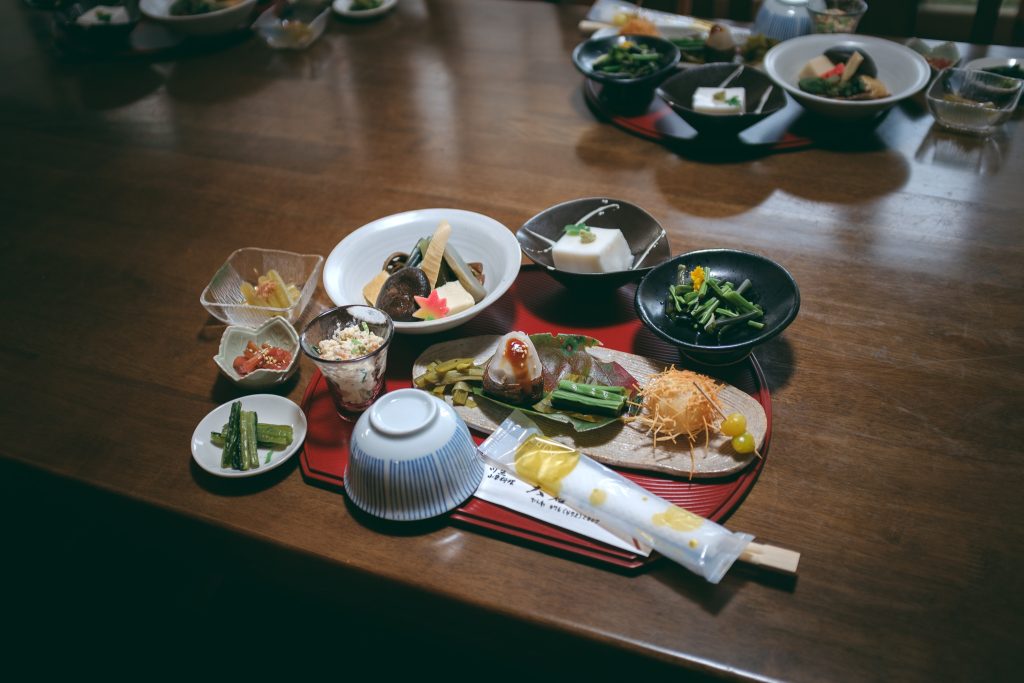
Table of Contents
- Tips for Vegetarian and Vegan Travelers
- 1. There’s an App for That!
- 2. Useful Expressions
- 3. Watch Out for Dashi!
- 4. Indian Restaurants
- 5. Online Communities and Meetup
- 6. Conveyor Belt Sushi
- 7. Tofu, Onigiri and Lots of Tasty Side Dishes
- 8. Bakeries and the Japanese Egg Salad Obsession
- 9. Miso Soup, Real not Instant
- 10. Kushikatsu
- 11. Find Vegetarian Restaurants at Bento.com
- 12. Eat in A Temple
- My Bonus Tokyo Vegetarian Restaurant List
Tips for Vegetarian and Vegan Travelers
*Before I begin — I mention going to convenience stores a couple of times — this may not sound good, but Japanese convenience stores are not like ones in other places around the world.
1. There’s an App for That!
If you haven’t discovered it already, Happy Cow is your friend for finding vegan or vegetarian food while globetrotting. Visit Happy Cow and download the app for veggie-friendly food on the go.
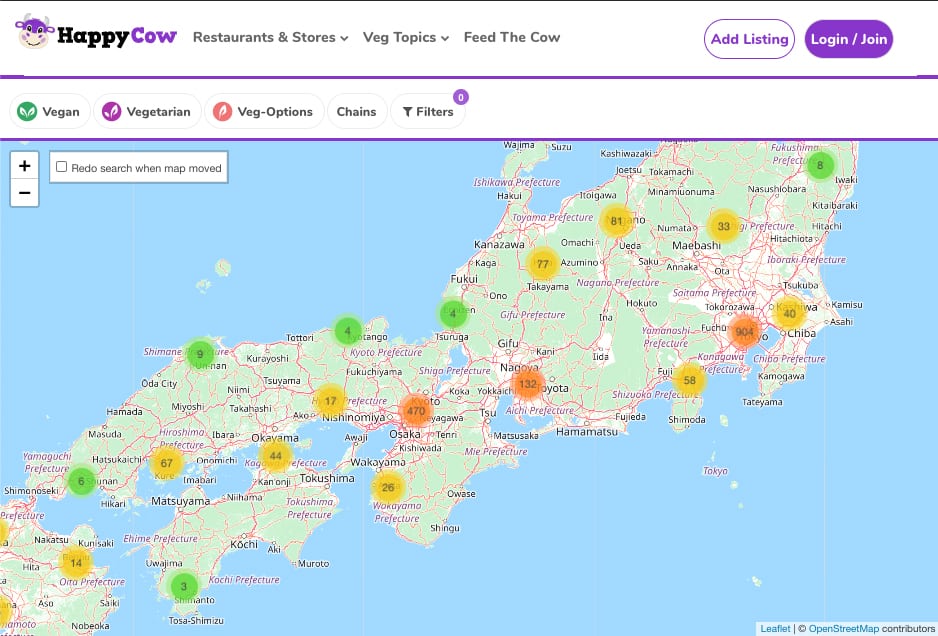
2. Useful Expressions
The lovely people over at Just Hungry have created printable cards to carry with expressions in Japanese and English to help traveling vegetarians and vegans of all types. Check out their page here. (If possible print before you come.)
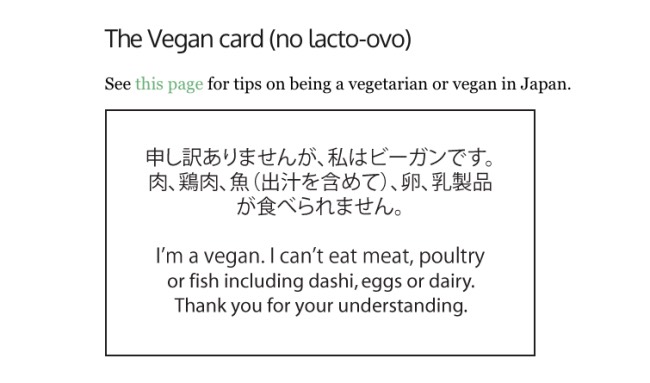
3. Watch Out for Dashi!
If you are a vegetarian that does not eat fish then you have to be extra vigilant. Many many many dishes, sauces, and soups — with no meat or visible seafood in them — are still made with a fish stock base known as dashi (出汁). Do not assume just because something says it is veggies only that it has not been simmered in dashi. Best to use caution on all soup and sauce bases in Japan.
4. Indian Restaurants
Indian food is very popular in Japan. I have eaten in Indian restaurants even in quite small cities around the country, and as you know Indian food features many/most dishes with no meat, fish or other animal products. Moreover, the quality of Indian restaurants is quite high in Japan as well, so the food is often delicious.
5. Online Communities and Meetup
One of the best ways to get information is to connect with online communities in Japan. Meetup.com has a great Vegan group with over 8,000 members! Browsing their site before you come can give you a lot of ideas for restaurants. You can also become a member to attend an event while you are in town or to ask questions on the group discussion page. These folks have all the latest info on the best places for vegetarian food in Tokyo and you can ask for tips for locations around the country, how to order, and what to watch out for.

6. Conveyor Belt Sushi
These fun sushi restaurants, known as kaiten sushi (回転ずし) are perfect for vegetarian travelers. You might think that sushi always means fish, but that is simply not true. You will find all sorts of veggie friendly dishes, including some side dishes and desserts. A few veggie-friendly sushi types are cucumber roll (かっぱ巻き), pickled vegetable sushi, egg sushi (tamagoyaki 卵焼き), corn and mayo, and inarizushi, a slightly sweet type of sushi which is made with fried tofu marinated in a sweet mirin sauce. The best part is you can just choose the food as it goes by you on a conveyor belt that way you only get the dishes that you want to try! No problem figuring out from the menu what you can and can’t order.
Again, be aware that dashi can show up in some dishes and even soy sauce so you will need to be careful. There is a soy sauce made with seaweed called konbudashi (昆布だし) that is fish-free for vegans and strict vegetarians served at larger chains like Hamazushi.
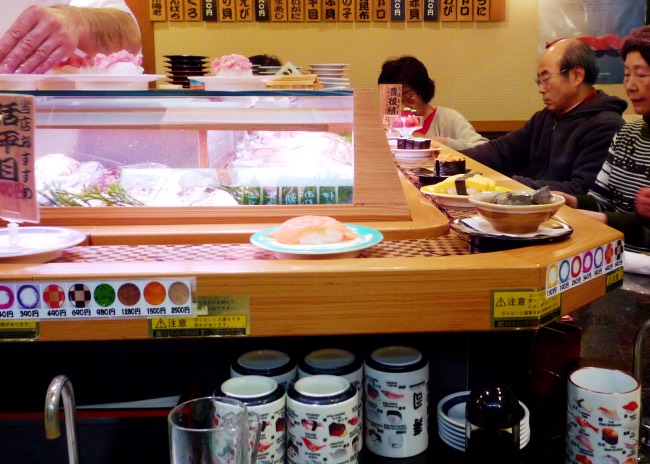
7. Tofu, Onigiri and Lots of Tasty Side Dishes
Speaking of side dishes, at most convenience stores (コンビニ) and Japanese pubs (izakaya 居酒屋) you will find tasty tofu dishes, salads, roasted corn, pickled veggies, and other sides. If you stick to the side dish section of the menu you can have a few cheap and cheerful tapas-sized items and make a meal out of 4-5 small dishes. You can also find specialty tofu restaurants and shops where the dishes are made from a huge variety of tofu types prepared in hundreds of different styles. Ume no Hana is a famous tofu cuisine chain restaurant with over 11 locations in Tokyo alone and is a great place to experience tofu in so many new ways!
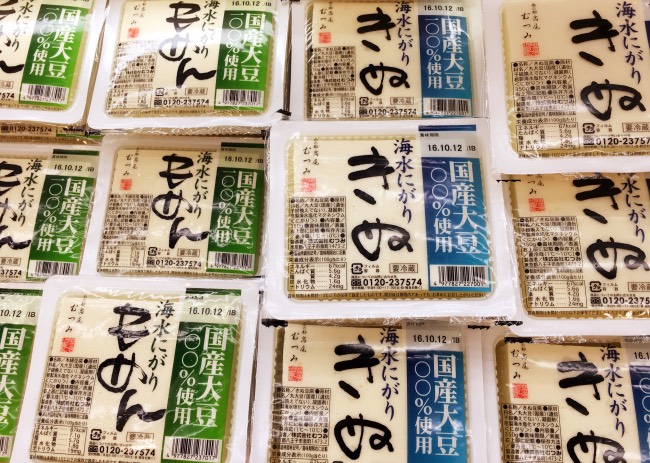
8. Bakeries and the Japanese Egg Salad Obsession
For vegetarians who are ok with eggs, you will find a ton of tasty bakeries all across Japan that serve savory as well as sweet bread and baked goods. You can always pick up delicious, fluffy egg salad sandwiches for a quick lunch with no meat. The Japanese have a bit of a thing for egg salad so you can find these everywhere from Hokkaido to Okinawa. Some are egg salad only and some are paired with fresh tomatoes.
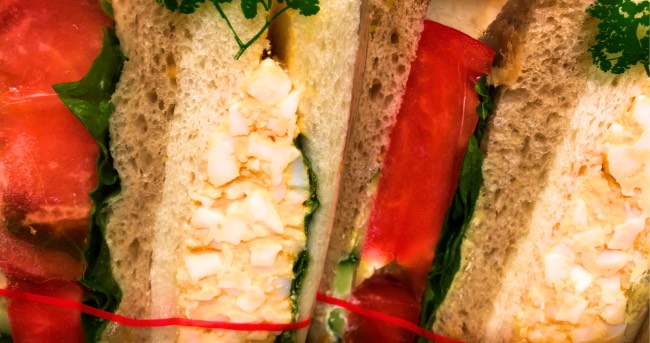

9. Miso Soup, Real not Instant
Be careful with miso soup (misoshiru 味噌汁). Miso itself is vegan-friendly, but the soup is almost always prepared with fish-based dashi. In some cases, it may also contain seafood (for example, clams in asari misoshiru or shijimi misoshiru) or even meat (as in tonjiru). There are vegan-friendly alternatives, made with konbu seaweed or shiitake mushrooms, but they are less common. Also avoid instant miso, which is almost always made with fish-based dashi.
10. Kushikatsu
Kushikatsu are fried food served on sticks like yakitori. But unlike yakitori, many kushikatsu are vegetables: onion, sweet potato, lotus root and bell pepper are common. For more adventurous sorts, you can try ginkgo nuts, pickled ginger, and bamboo shoots as well. Some restaurants will even let you fry your own kushikatsu at your table! Kushikatsu dough is usually made with egg, so keep that in mind if that is important to you.
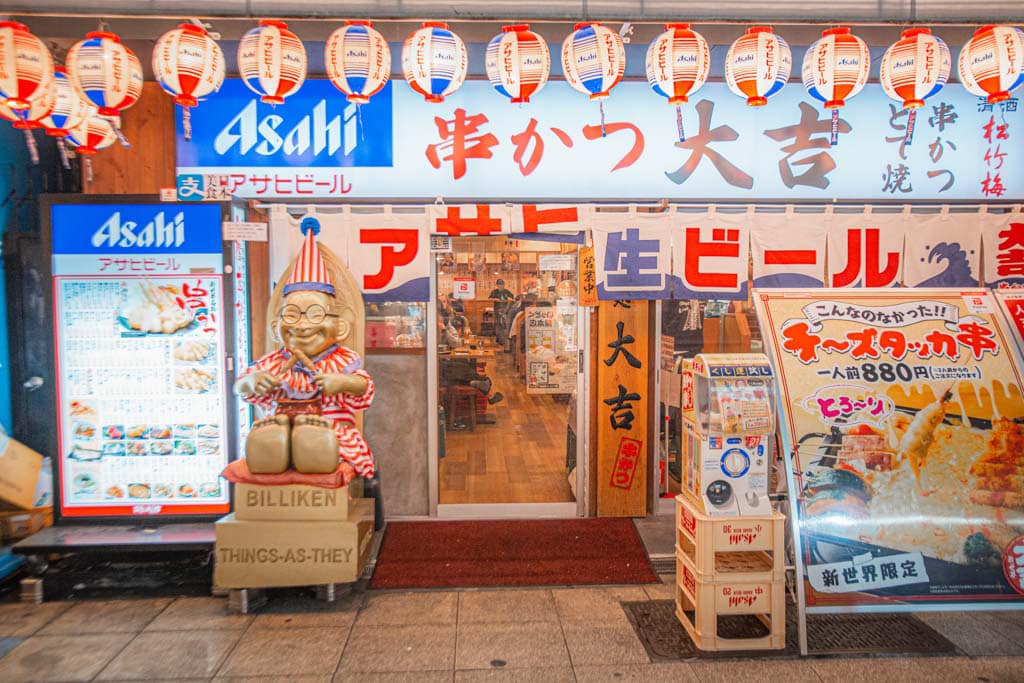
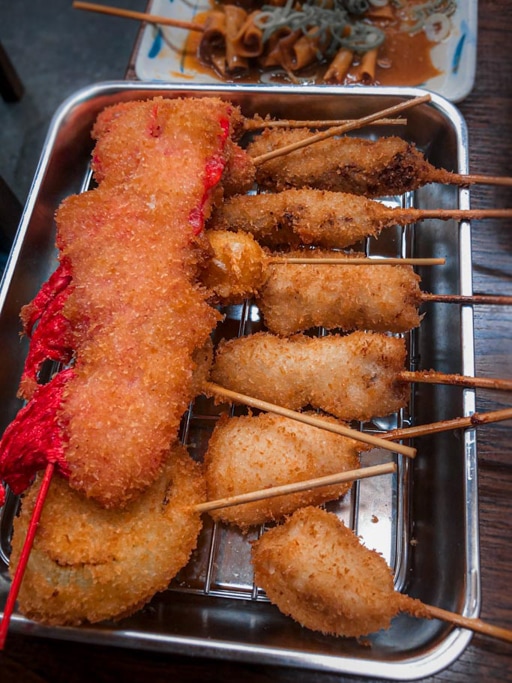
11. Find Vegetarian Restaurants at Bento.com
For searching and reading- Another good site beyond the Happy Cow, is the local restaurant guide Bento.com. With over 25 years online, this site has an exhaustive list of restaurants in various parts of Japan and is easily searchable with vegan and vegetarian filters. You can get loads of useful information on this site.
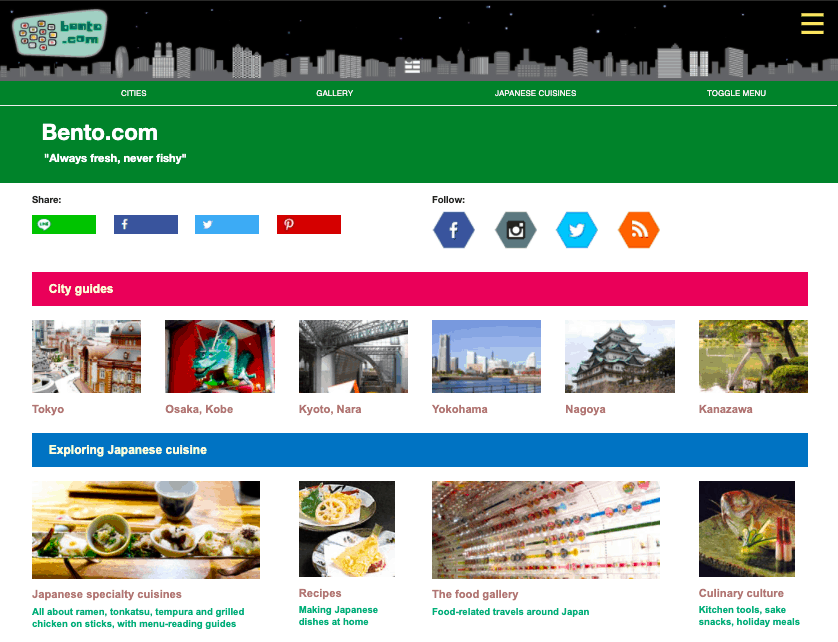
12. Eat in A Temple
My final tip, for an amazing vegetarian Japanese meal why not stay in a temple, many have overnight experiences and serve the most amazing dishes as devout Buddhists do not eat meat. This site Temple Lodging in Japan is a great resource to choose and arrange a stay at temples in various regions around the country.
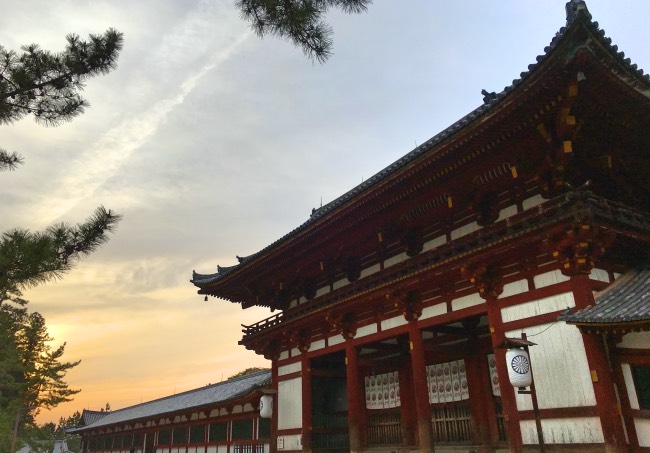
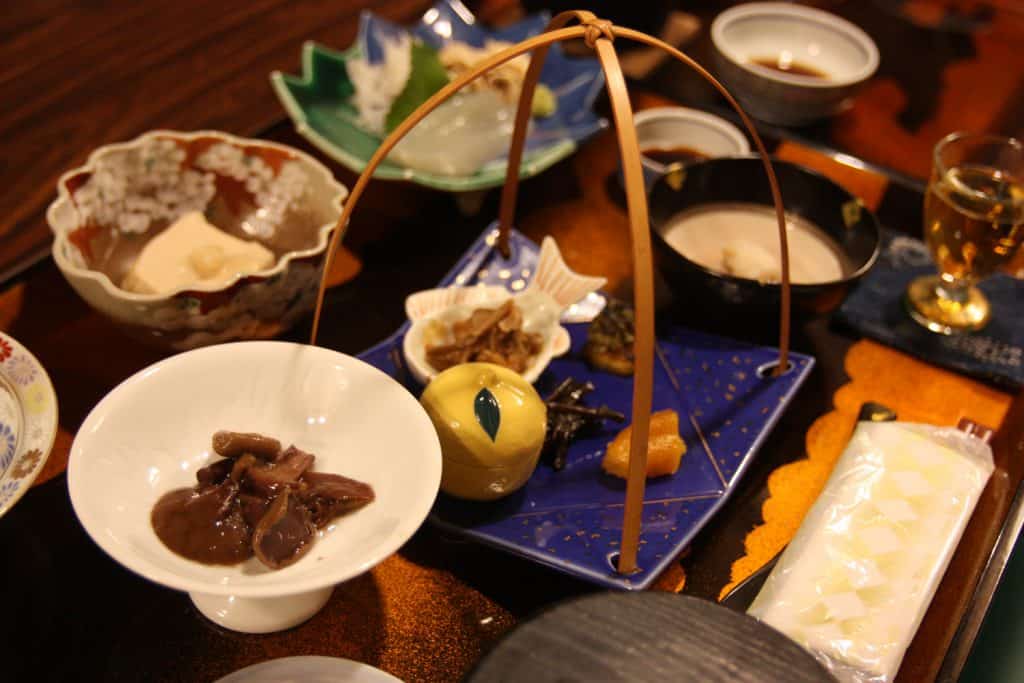
My Bonus Tokyo Vegetarian Restaurant List
A little bonus for those of you visiting Tokyo, here are my top 5 favorite vegetarian restaurants in the Capital:
-
- Citron A relatively new spot with lots of vegetarian and vegan baked goods and salads.
- The Pink Cow Vegetarian-friendly with many choices on the menu
- Eat More Greens Vegetarian, vegan and gluten-free, great for curry and pasta lunches, and a greatly expanded dinner menu.
- Nagamine (fancy wonderful course dinner served Kaiseki traditional style)
- Crayon House which has two vegetarian and organic restaurants in their basement level, one Japanese style, and one French. (They also have a great place in Osaka)
Traveling in Japan as a vegetarian and vegan is not only possible but it can be a super, fun, foodie adventure!






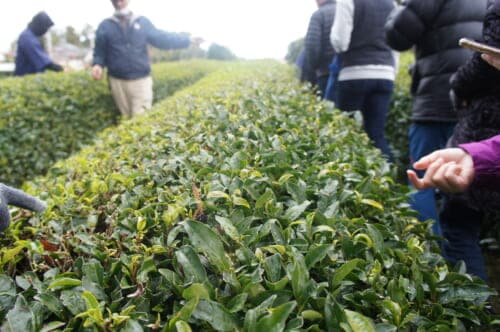
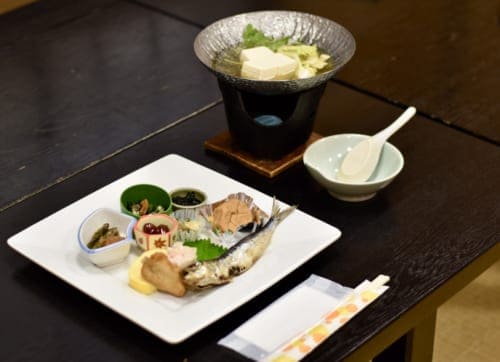


No Comments yet!